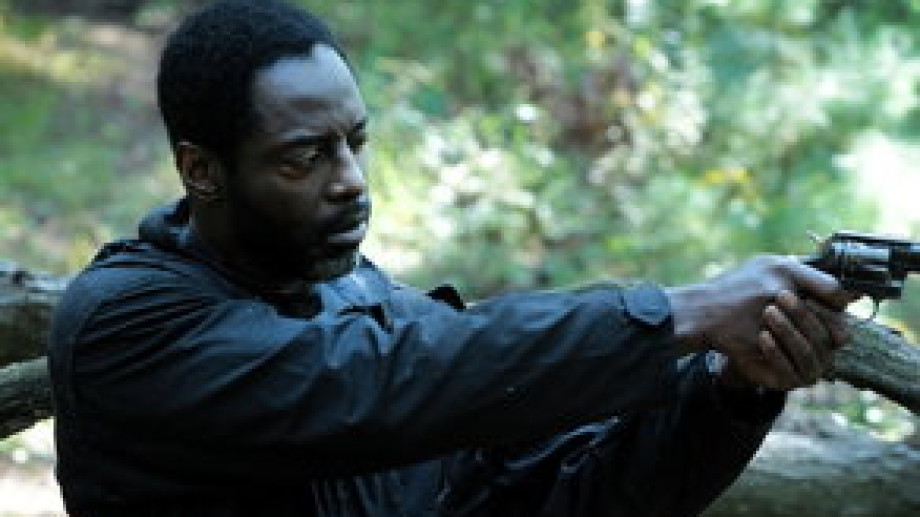
Isaiah Washington in Alexandre Moors's Blue Caprice
After several short films and music videos, French-born director Alexandre Moors set out with writer R.F.I. Porto to chronicle an American tragedy that terrorized the Washington, D.C. area—and the nation through endless media coverage—one decade ago, in which 10 people were killed and three others critically injured. Blue Caprice stars Isaiah Washington as John Allen Muhammad and Tequan Richmond as Lee Boyd Malvo, the two perpetrators of the rampage, and spotlights their troubling and warped bond after the two meet in Jamaica.
The violence that gripped the U.S. capital and surrounding areas in fear gets some play in the film, but it's the events leading up to the killing spree that most drives the story. Named after the 1990 Chevrolet Caprice in which the two traveled and found their random victims, the film is an unfortunately timely look at violence in America and the psychology behind one of this century's most frightening set of serial killers. Blue Caprice opens this year's New Directors/New Films series on Wednesday. FilmLinc spoke with director Alexandre Moors about the film in a brief conversation ahead of its New York Premiere.
FilmLinc: This is your first feature film, what inspired you to take on this story?
Alexandre Moors: I was looking for just the right story. We started with the idea that we wanted to make a feature within six months time and that was the personal challenge at the heart of this film. So when I was looking for a subject, I was looking for something small in scope. I ran into the subject about the Beltway Snipers and this father and son waging this war against the United States.
It is big in one sense, but it takes place in an extremely minimal setting and the two characters have an extremely tragic quality about them. They were traveling in a car and training in the woods. It seemed small in scope but timely with the subject at hand. So it was the perfect story for me. I was abroad when the real [crimes] occurred, and that made it all the more possible to do, because I was somewhat oblivious to how big a story it was and how big a story I was in fact tackling. It was really a character study of these two people.
FL: How much research did you do and was there enough information to weave together a story about John Muhammad and Lee Malvo leading up to the killings?
AM: We didn't start writing the script right away. We wanted to have all the facts or at least gathered the known facts. We had access to court transcripts and doctors' expertise related to the case. The first few months, we gathered all these facts and traveled to the areas where John Muhammad and Lee Malvo had been. It was rigorous work. The research part took three months and then we wrote the script in two months.

FL: How did you work with Isaiah Washington and Tequan Richmond to prepare their performances?
AM: We were extremely pleased with the casting, especially considering the film's budget. Isaiah Washington was my first choice—and actually my only choice. At the time, he was semi-retired and he didn't have any agents or managers, so I had to find him in an old fashion way by preparing a letter. I approached my casting director and he found Tequan. It was extremely hard to find a 16 year-old who could play that part—he is silent for a large part of the film and you have to guess what he is thinking. We did a few readings through Skype and we cast him.
FL: What was your creative collaboration like with Isaiah Washington?
AM: Having him on board was essential to making the film and for its financial construction. He was extremely invigorating. He has had a lot of experience working with directors like Steven Soderbergh and Spike Lee. It was my first film. Isaiah and I “tackled” and “wrestled” a lot, but it was always in our search for the truth for his character and it was invigorating overall for the whole film project. The character of John is very difficult to understand and we weren't working a clear line with these characters.
FL: In your research, what could you glean about a person's psychology that allows that person to commit such violence without, seemingly, to care?
AM: That's a very hard question. The whole film is really trying to answer that question, so I don't want to suggest there's really a [complete] answer to that. What I observe is that we're living in a country that is a cultural island and that makes it acceptable. It surrounds us through the structure of the government and fabric of society. I think what's really troubling in this film and in real life is how there isn't much consideration or debate about taking someone's life.
We struggled when we were doing this film with regard to [Tequan Richmond's] character. Just two months after landing in America, he was able to just walk into this girl's house and shoot her. Just six months before he was [very different]. I think that's the whole question surrounding the film. There is no real answer to this.
FL: How much consideration should be given to allowing enough time to pass before telling a story?
AM: I don't think there's a rule. For me, enough time had passed—it had been ten years. But this film is also not so much a re-telling of the killings, but is rather more of an allegory to tell a timeless story. It's more about showing certain aspects of the world. People can take different aspects from the film. There isn't one simple message.



